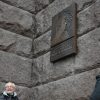Historians have found the first mention of brain surgery
Ancient «neurosurgeons» from Neolithic times in Europe had a cure for headaches and demons in the head, resulting in thousands of patients buying huge weekends holes — some up to 10 centimeters wide — drilled into their heads. This is how the first brain operations by trepanation appeared.

Known as trephination, the practice of drilling a hole in the skull was a common surgical procedure in prehistoric times, examples of which have been discovered at archaeological sites around the world. By analyzing cavities in 41 Neolithic skulls from France, the authors of a new study uncovered fascinating details about this crude procedure, revealing just how invasive and elusive it really was.
The examined skulls, housed at the Musée de l'Homme in Paris, were between 8,000 and 4,000 years old and were among 159 in the collection that showed evidence of trepanation. Using digital calipers, the study authors measured the diameters of these surgical holes and showed that the average trepanation size ranged from 2.95 to 5.43 centimeters.
However, while even the lower end of this range may seem unacceptably large, the researchers report that some of the holes were larger than 10 centimeters. Yet most ancient trepanations around the world show signs of healing, suggesting that the lion's share of patients actually survived for some time after surgery.
“The high survival rate, despite the dangers of cerebral edema, infection, hemorrhage and shock, is a clear indication of the high level of skill and experience of these early trephination surgeons,” — the authors of the study concluded. For example, it has been suggested that Neolithic physicians sterilized their stone tools before opening the skulls of patients, while plants with natural analgesic or antibiotic properties were used to help trepanees overcome their ordeal.
Scientists still don't know exactly why trephination was so popular in prehistoric times, although some believe the procedure was performed to relieve intracranial pressure caused by injury or pathology. On the other hand, back in the 19th century, neurologist and anthropologist Paul Broca suggested that the practice was related to the belief that seizures were caused by demons that needed to be released by making holes in the skull.
Whatever forced Stone Age doctors to cut chunks out of the heads of their patients, trepanation represents an intriguing experimental step on humanity's path to surgical prowess. Thus, the study authors note that their results are “very important for understanding the origins of modern neurosurgery, tracing its earliest stages.”























































Свежие комментарии